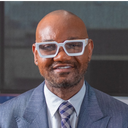Posted underScar Removal q&a
What can I do to get rid of my keloids in the back of my head and on top? It itches
Answers (6)
From board-certified doctors and trusted medical professionals
Dr. Sanusi Umar, MD

Dr. Sanusi Umar, MD
Dermatologic Surgeon, Board Certified in Dermatology
Answer
Dr. Raffy Karamanoukian, MD, FACS

Dr. Raffy Karamanoukian, MD, FACS
Board Certified Plastic Surgeon
Answer
Dr. Jason Emer, MD

Dr. Jason Emer, MD
Dermatologic Surgeon, Board Certified in Dermatology
Answer
Dr. Richard G. Reish, MD, FACS

Dr. Richard G. Reish, MD, FACS
Board Certified Plastic Surgeon
Answer
Dr. Ariel Ostad, MD
Dr. Ariel Ostad, MD
Dermatologic Surgeon, Board Certified in Dermatology
Answer
Dr. Davin Lim, MBBS, FACD - Account Suspended
Dr. Davin Lim, MBBS, FACD - Account Suspended
Specialist Dermatologist
Answer
More Scar Removal Questions
See all Scar Removal Q&AWE SEND PRETTY
EMAILS
What’s trending? Who’s turning heads? Which TikTok myths need busting? We’ve got you. No fluff, no gatekeeping—just real talk. Get our free, unfiltered newsletter.